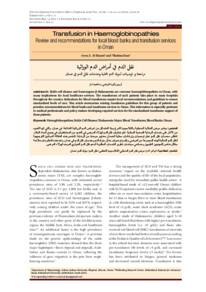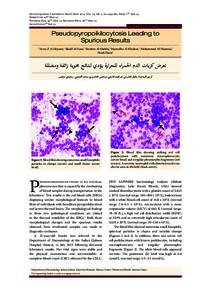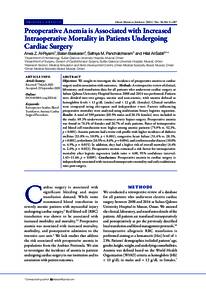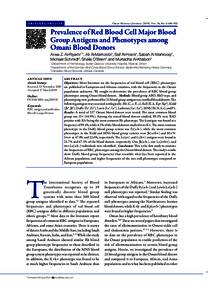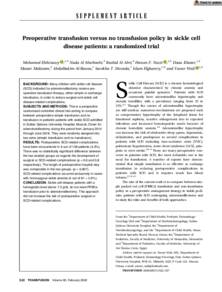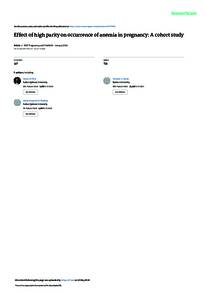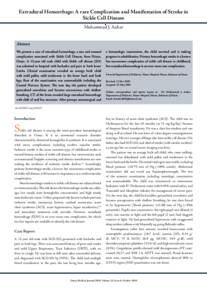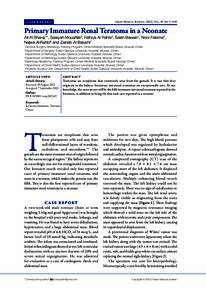Document
Intrauterine fetal blood transfusion : descriptive study of the first four years' experience in Oman.
Identifier
DOI: 10.18295/squmj.2018.18.01.006
Contributors
Al-Salmaniyah, Moza., Author
Al-Hashamiyah, Sabria N., Author
Al-Mahrooqiyah, Sabah., Author
Al-Marhoobi, Ali., Author
Other titles
نقل الدم للجنين في داخل الرحم : دراسة وصفية لتجربة الأربعة سنوات الأولى في سلطنة عمان
Publisher
College of Medicine, Sultan Qaboos University.
Gregorian
2018-01
Language
English
English abstract
Objectives: Haemolytic disease of the fetus and newborn (HDFN) causes hydrops fetalis. The successful
treatment of HDFN has been reported with intrauterine blood transfusion (IUT). This study aimed to describe the initial
experience with IUT procedures in Oman. Methods: This retrospective observational study took place at the Royal
Hospital and Sultan Qaboos University Hospital Blood Bank, Muscat, Oman, and included all women who underwent
IUT procedures in Oman between March 2012 and March 2016. Gestational and neonatal outcomes were assessed,
including complications, morbidity, neurodevelopmental sequelae and mortality. Results: A total of 28 IUT procedures for
13 fetuses carried by 11 women were performed. Gestational age at the time of referral ranged from 13–30 weeks, while the
median gestational age at first IUT procedure was 26 weeks (range: 19–30 weeks). Indications for the procedure included
HDFN caused by anti-D (n = 6), a combination of anti-D and anti-C (n = 4), anti-K (n = 1) and anti-Jsb
(n = 1) antibodies and
nonimmune hydrops fetalis due to a congenital parvovirus infection (n = 1). Median fetal haemoglobin levels at the beginning
and end of the procedure were 4.6 g/dL and 12.8 g/dL, respectively. Most procedures were transplacental intravascular
transfusions through the placental umbilical cord root (71.4%), followed by transamniotic intravascular transfusions (14.3%).
The overall survival rate was 61.5%, with five deaths; of these, four were intrauterine and one was an early neonatal death due
to non-resolved hydrops and severe cardiac dysfunction. Conclusion: As a relatively novel obstetric procedure in Oman,
IUT seems to result in a favourable outcome for hydropic fetuses.
Member of
Resource URL
Citation
Al-Riyamiyah, Arwa Z., Al-Salmaniyah, Moza, Al-Hashamiyah, Sabria N., Al-Mahrooqiyah, Sabah, Al-Marhoobi, Ali, Al-Hinaiyah, Sumaiya, Al-Hosni, Saif, Panchatcharam, Sathiya M., & Al-Arimiyah, Zainab A. (2018). Intrauterine fetal blood transfusion : descrip
Category
Journal articles


